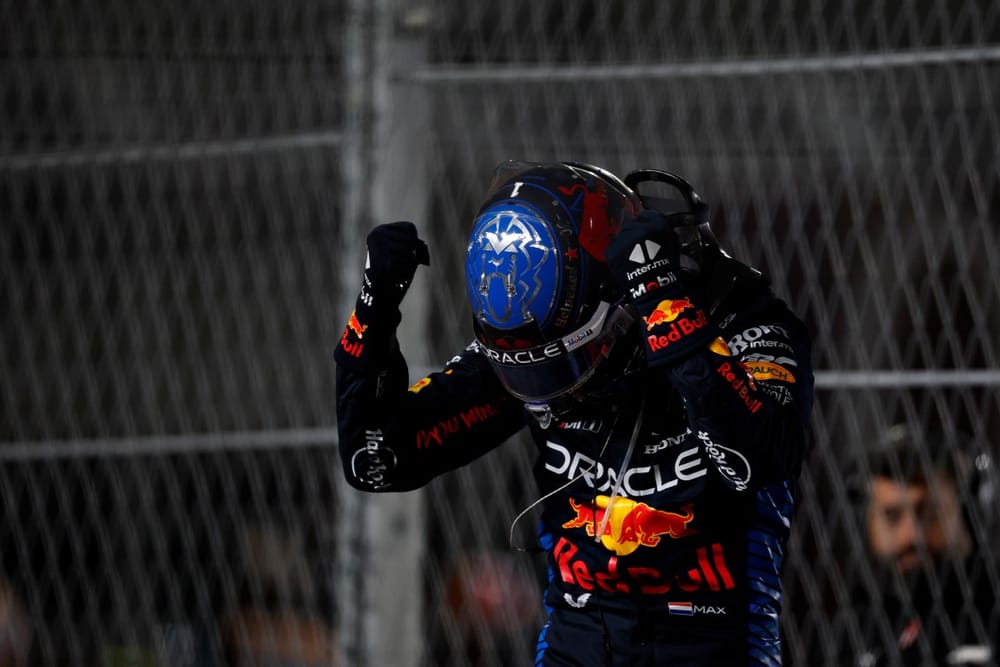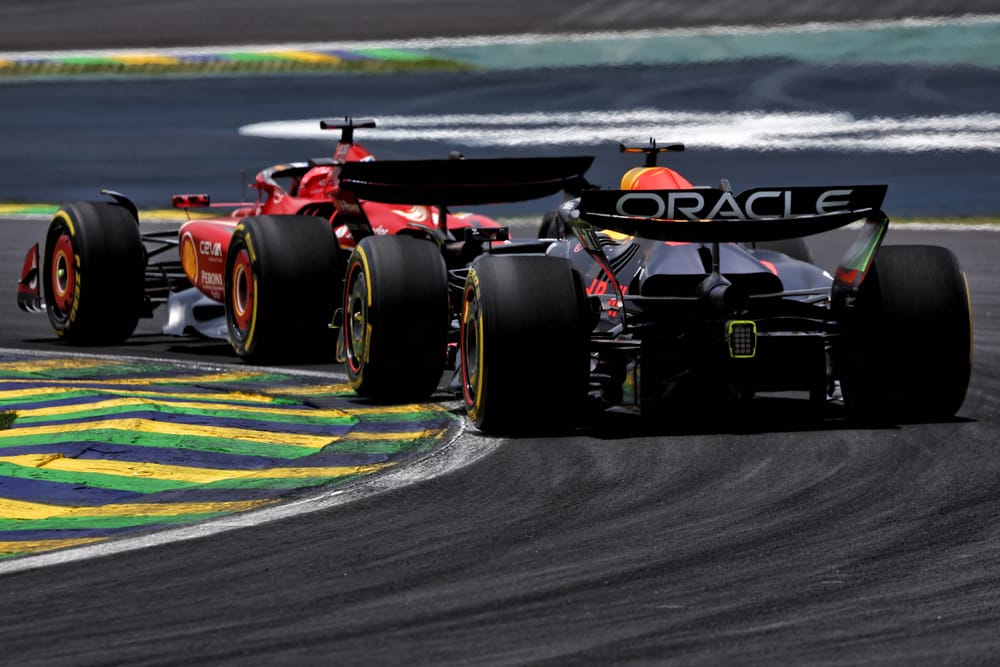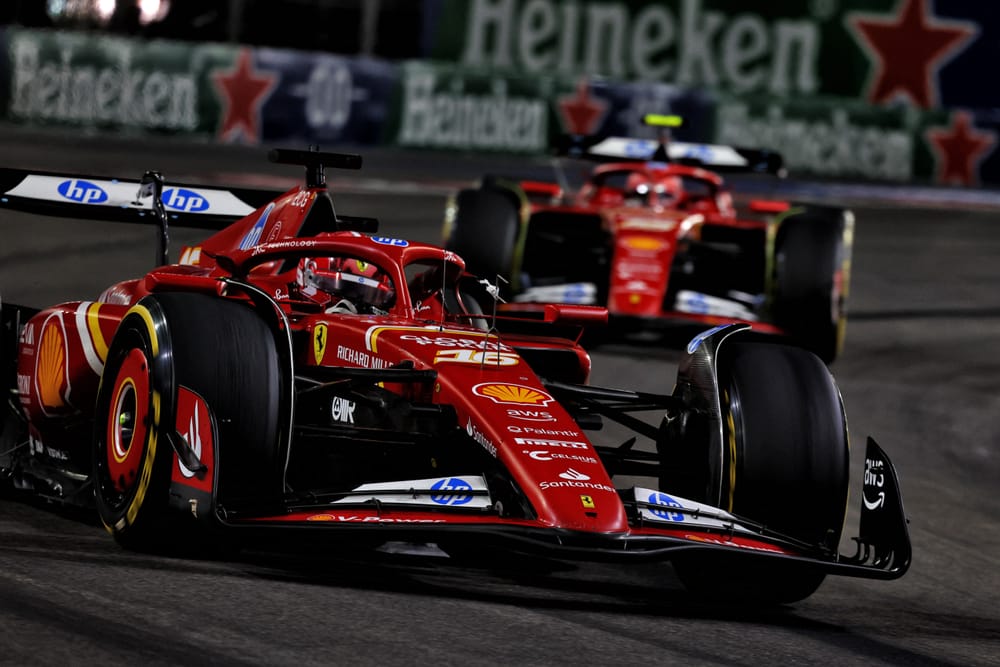

Ferrari sliced 12 points out of McLaren's lead in the constructors’ championship battle in Las Vegas, closing the gap to 24.
But that wasn't enough given the first part of the season-ending triple-header on paper offered it the best chance to win big and put itself in a strong position for the title.
It’s not out of contention and, chances are, the title fight will only be resolved one way or another in Abu Dhabi. But the odds are now firmly stacked against Ferrari, as Charles Leclerc explained after following home team-mate Carlos Sainz in fourth place.
“It’s going to be [a fight] until the very end,” said Leclerc. “I think [McLaren is] going to be very strong in Qatar, so we’ve got to have a good weekend. I’ll be surprised if we recover points from them. We’ve got to, but I expect it to be tricky.”
The long straights and slow corners should have played to the slow-corner and aerodynamic efficiency strengths of the Ferrari.
However, as explained in detail by Mark Hughes these characteristics were overwhelmed by the tyre-graining challenges that defined performance and allowed Mercedes to take a one-two finish.
Therefore, this wasn’t a case of Ferrari throwing away its chance to repeat its Austin or Mexico City wins, but an example of how the confounding factors of the conditions and tyres stymied it on a circuit that should have been good for it.
As both the team and drivers have regularly highlighted, Qatar is expected to be a weak circuit for Ferrari, one where it should be slower than McLaren and potentially also Max Verstappen’s Red Bull.
As McLaren team principal Andrea Stella explained, there’s reason for his team to be cautiously optimistic.
“We have to thank Mercedes for having performed so strongly and secured P1/P2, otherwise Ferrari would have been an ever bigger threat in the constructors’ championship,” said Stella.
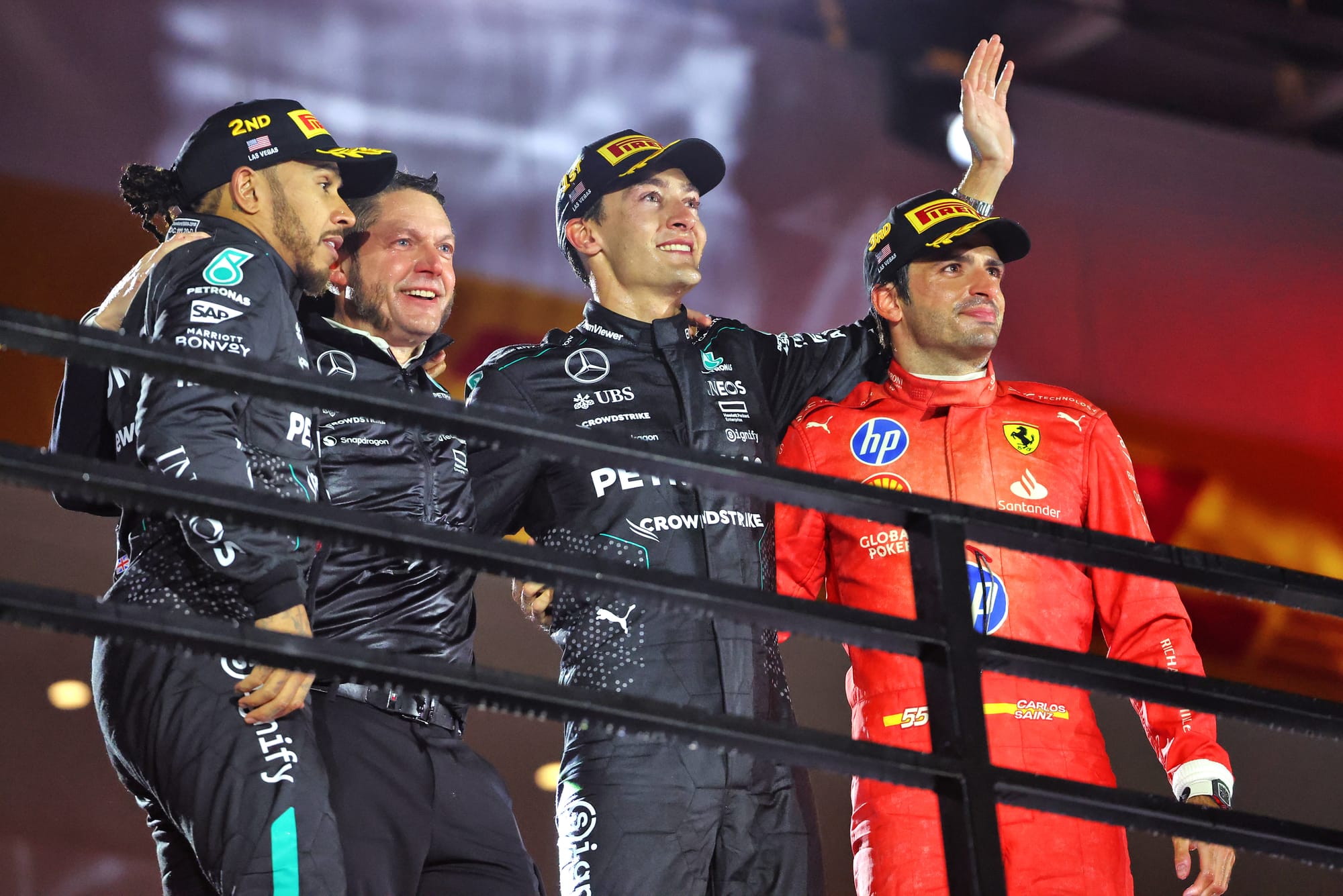
“It's true that Qatar and Abu Dhabi should be territory that is more suitable for the way we have designed our car, but at the same time we need to be careful that the level of the top teams in Formula 1 is unprecedented.”
That’s what Ferrari must now hang its hopes on. There is at least a glimmer of hope. The front wing upgrade introduced in Singapore was designed to pay dividends in fast corners and the fact Qatar requires less low-speed compromise in terms of set-up than any track Ferrari has been to recently means the car could end up in a better place than we’ve previously seen at other high downforce tracks.
It’s certainly better equipped than it was earlier in the season, when senior engineer Jock Clear admitted Ferrari was “backed into a corner at some of the high-downforce circuits because we’re running out of front [aero] power”.
Ferrari is now, by some distance, second-favourite for the title, although it should have Red Bull covered given Sergio Perez’s scoring rate is terrible with just nine points across the past six events – two of them sprint weekends.
But Las Vegas also threw up some other concerns for Ferrari.
‘STRANGE’ TECHNICAL DIRECTIVE
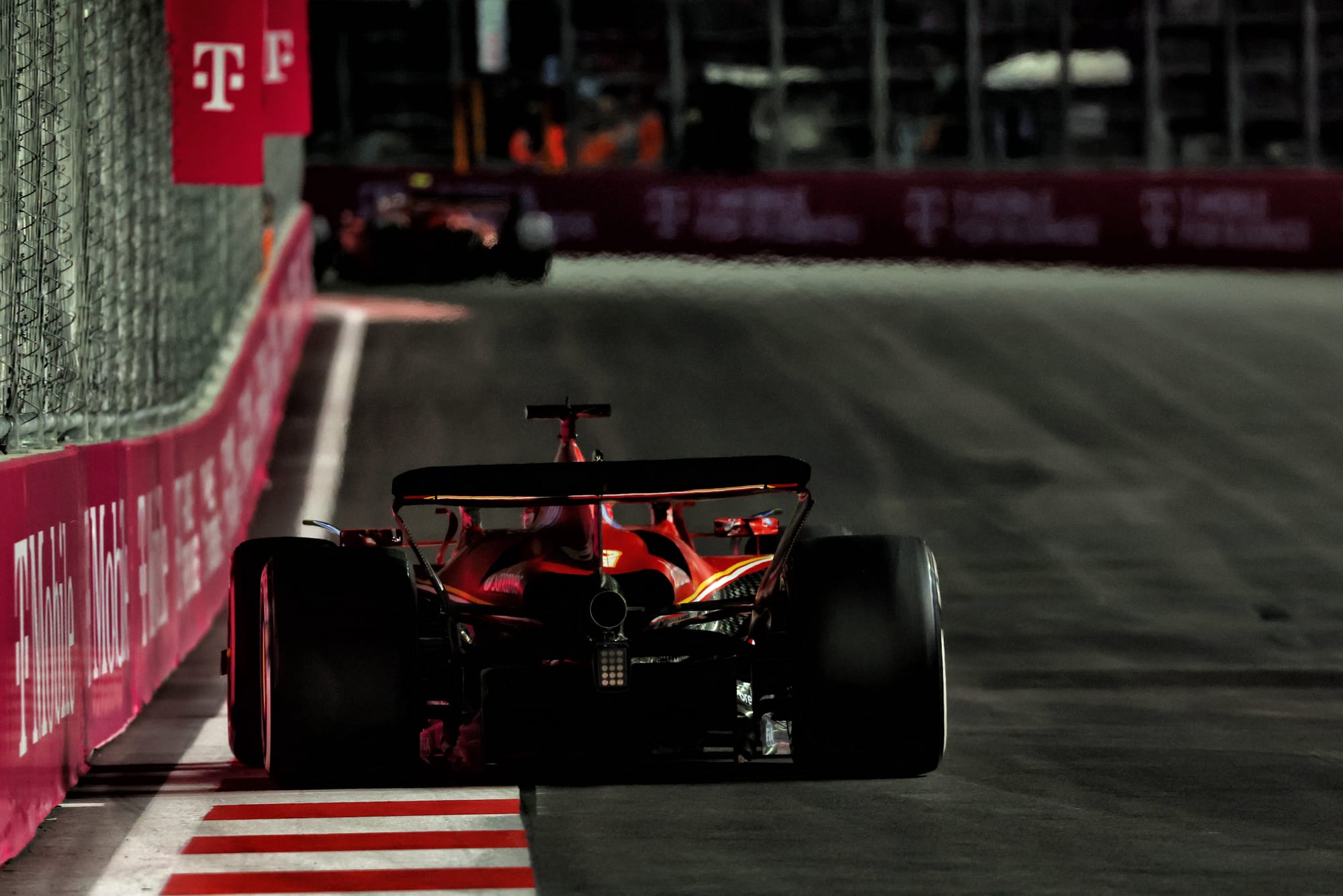
Ferrari team principal Fred Vasseur was careful not to bite when asked about the topic, but it was clear that the technical directive related to underfloor plank skids and behaviour issued before the Las Vegas weekend wasn’t helpful to Ferrari.
There are two caveats we must add to this. Firstly, while Ferrari had pushed for the TD to be delayed to the end of the season or at least to Qatar and Red Bull was eager for it to come in for Vegas – with team principal Christian Horner pushing for that in the recent F1 Commission meeting – it wasn’t aimed at it.
Ferrari, Red Bull, Mercedes, Alpine, Sauber and Haas had to make changes as a result. Secondly, Ferrari’s defeat in Vegas can in no way be ascribed to this given it was all about tyres. However, Vasseur did publicly give a glimpse into the team’s concerns.
“We had to make the change,’” said Vasseur when asked by The Race about the TD. “But we had also the confirmation before this that the plank was legal from the FIA. I think it was the right attitude for us not to fight because I want to stay focused on the championship and not on this kind of discussion. But the approach was strange.”
That last sentence is telling. After the race, Vasseur said “the weekend was about tyre management, it has nothing to do with this” and when asked about the performance impact of changes he said the impact was “in terms of budget a lot, because we had to redo all the skids”.
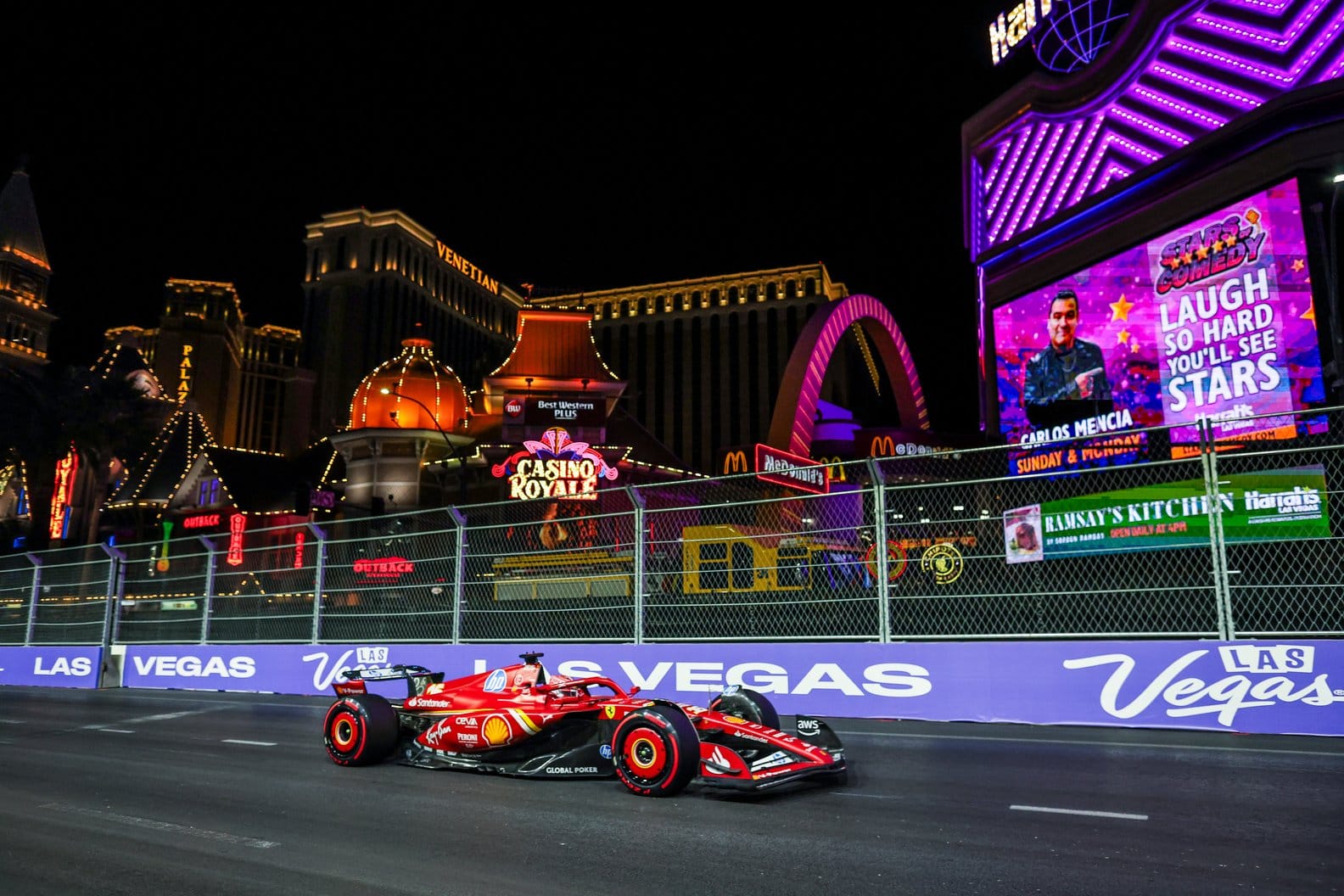
However, F1 teams don’t make specific designs for their own amusement, so it stands to reason that there was at least some effect.
Ferrari wasn’t the only team with question marks about the process. That’s understandable given that many of the floor/skid designs run have been in use – some with direct approval from the FIA technical department – since last year. The TD tidied up ambiguity in the previous version, but given these designs were legal thanks to imprecise wording it would perhaps be normal practice to wait to the end of the season to make a change.
Ultimately, though, if Ferrari fails to win the constructors’ championship it won’t be because of this technical directive.
TEAM ORDERS ROW
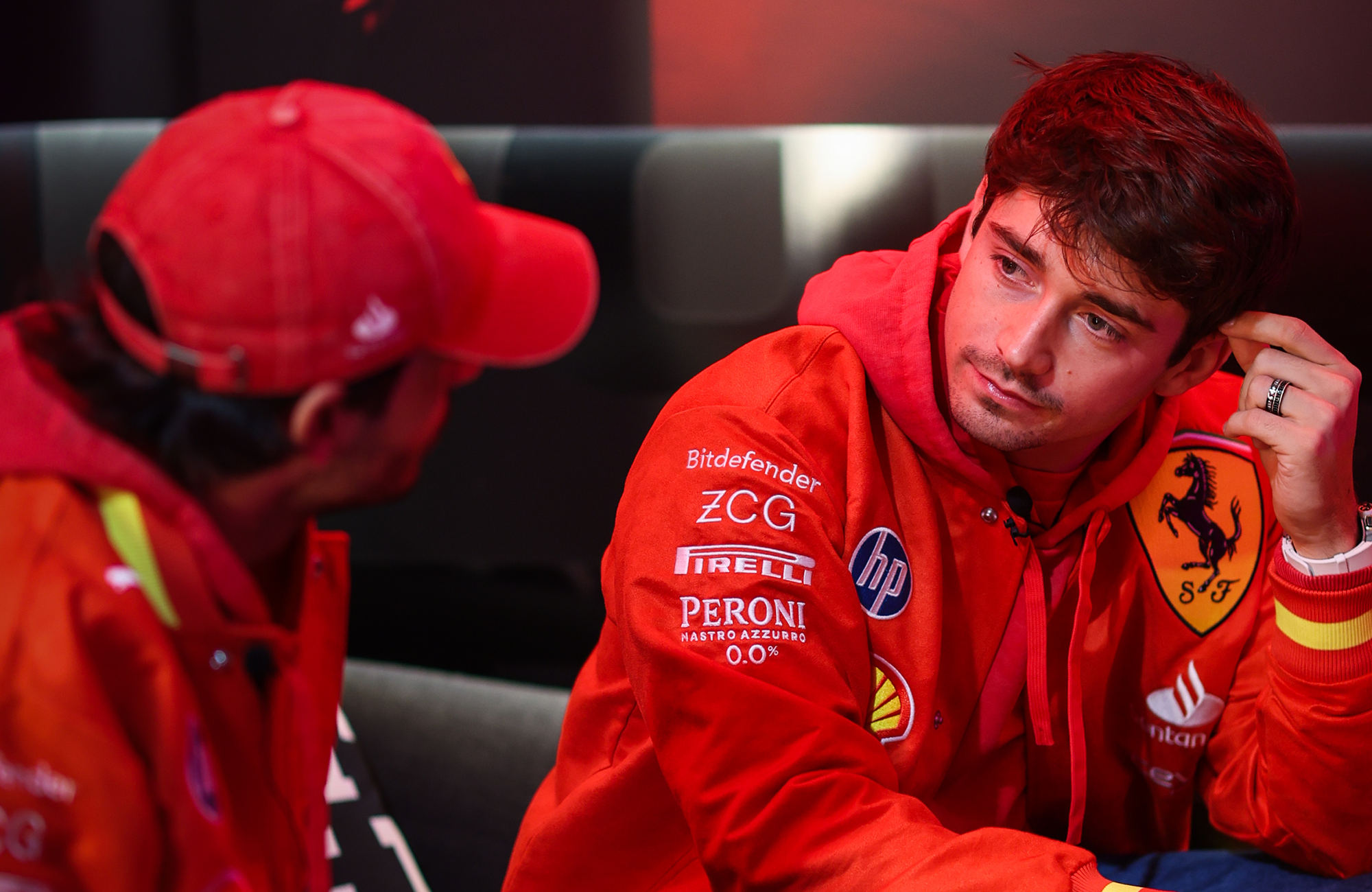
Vasseur also poured cold water on any questions of concern about the team orders friction in Las Vegas, saying “we will discuss tonight, it won’t be an issue”. Part of Vasseur’s rationale for this happening was the high-stress race, but this didn’t come from nowhere.
The Leclerc/Sainz alliance has worked well together, but there have sporadically been moments in races where one or the other has felt they should be prioritised, or where they disagreed with the management of the race.
That doesn’t mean there’s about to be a schism, but it’s a warning that Ferrari needs to ensure it keeps control in Qatar and Abu Dhabi with absolute clarity on how the two have to work together.
It's the corollary of having a strong line-up that such situations can arise. Sainz made that clear when he was asked about it in the post-race press conference.
“It’s been like that for four years,” said Sainz. “Charles and I have gone wheel to wheel every two or three races because we share the same piece of Tarmac.
"We are both very competitive, very close on pace, and we find ourselves always fighting each other at the same time that we fight the Mercedes, the Red Bulls, and the McLarens.”
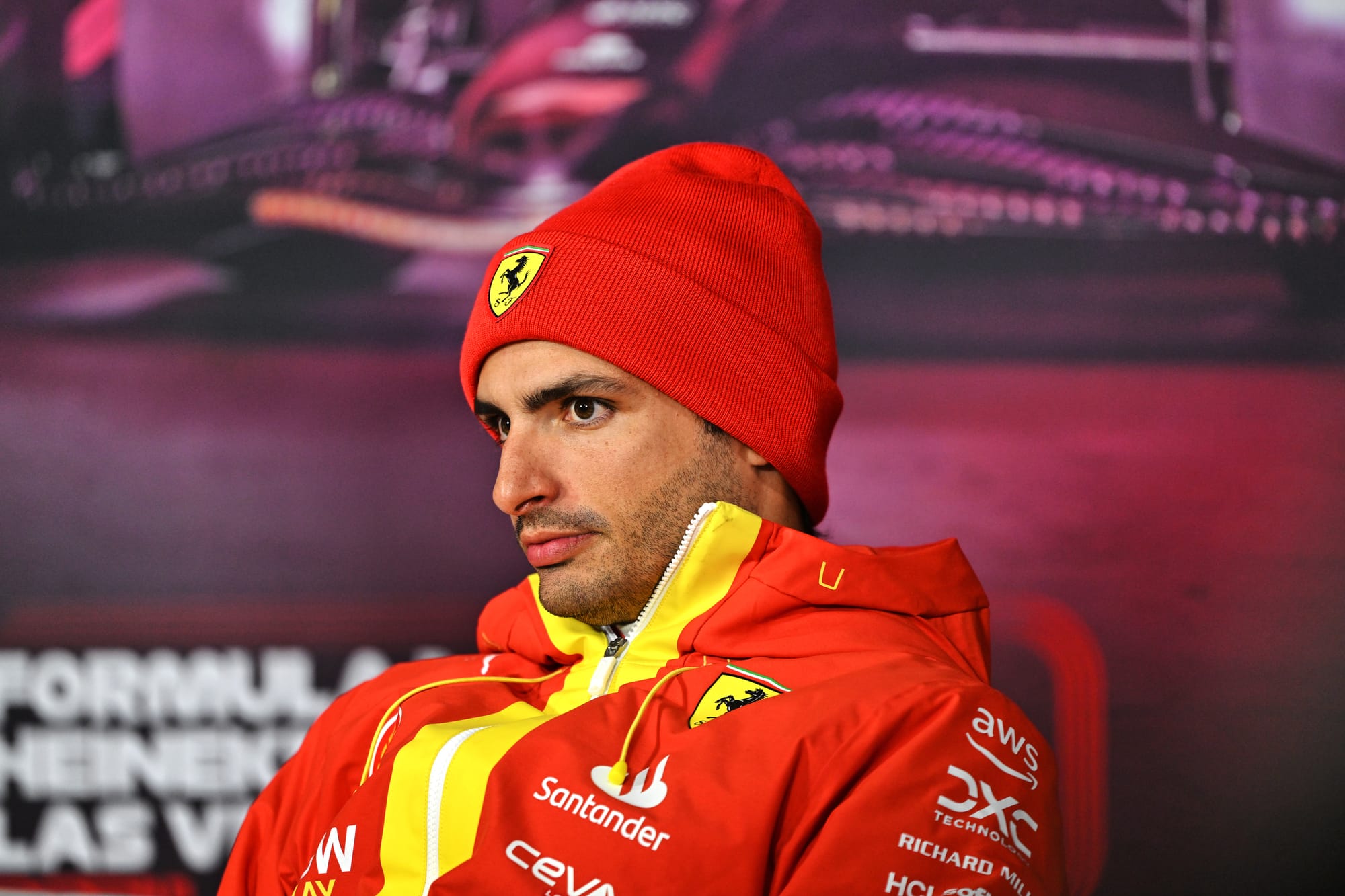
In Las Vegas, what happened had no impact on the result as third and fourth was the best that was achievable given the pace of the Mercedes.
But it’s a reminder of the need to ensure races are properly managed, as well as Sainz’s determination to do everything he can to sign off his successful Ferrari career with the constructors’ title.
WHAT’S AT STAKE
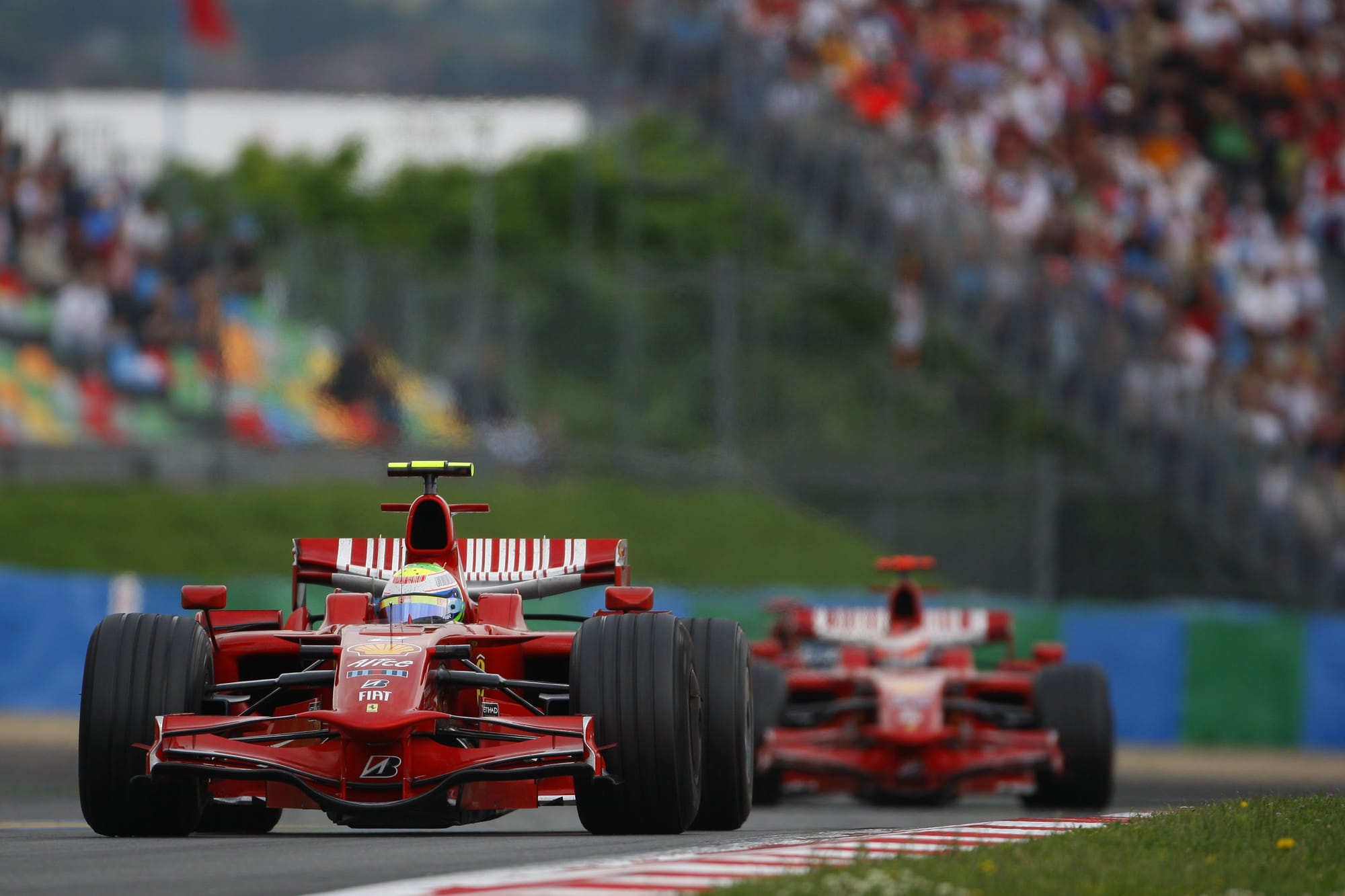
Whereas the drivers’ title is, in the eyes of the world, the F1 championship the constructors’ crown is far more than a footnote for teams. Doubly so for Ferrari, which will set a new record for seasons without a title of any kind in F1 if it loses out.
Ferrari’s last title was in 2008 (above) when it took the constructors’ championship. That means it has gone 16 seasons without one – equalling the record set between its successes in 1983 and ’99, so a 17th miss would be even more painful.
However, McLaren is in the midst of an identical drought having taken its last title, the drivers’ with Lewis Hamilton, in the same season.
Red Bull is still mathematically in contention, but given it's 53 points behind with only 96 to play for and Sergio Perez has scored a paltry 21 points in the eight events since the August break its chances are close to non-existent.
Now, McLaren is clear favourite with Ferrari the outsider - but unlike Red Bull one that still has a realistic chance. But it needs to exceed expectations in Qatar if it's to do so.
